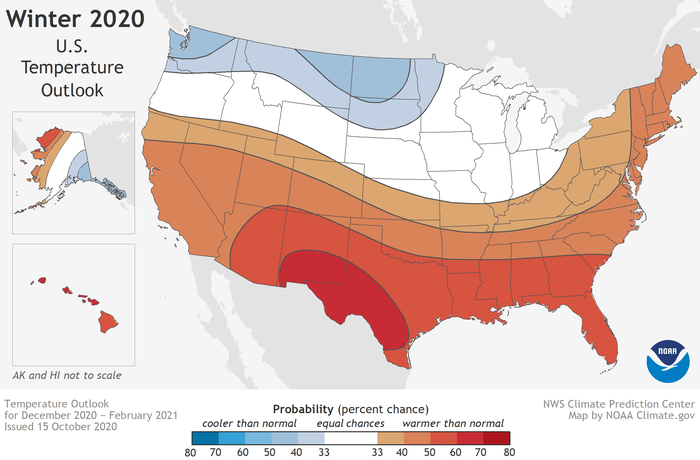Earlier this month the Nation Oceanic and Atmospheric Administration released their winter outlook for this upcoming season. According to Weather.com, “La Niña is the periodic cooling of the equatorial eastern and central Pacific ocean. When sea-surface temperatures are cooler than average by at least 0.9 degrees Fahrenheit (0.5 degrees Celsius), along with consistent atmospheric indications for at least three consecutive months, La Niña is considered to be present…This is important because the interaction of this cooler-than-average water with the atmosphere can affect weather conditions thousands of miles away in the U.S. and around the world.”
In the United States we have experienced the La Nina weather system with a more active hurricane season. “With La Nina well established and expected to persist through the upcoming 2020 winter season, we anticipate the typical, cooler, wetter North, and warmer, drier South, as the most likely outcome of winter weather that the U.S. will experience this year,” said Mike Halpert, deputy director of NOAA’s Climate Prediction Center. As the United States rolls into winter it will be interesting to see if the prediction models are correct or if something entirely different will take place.
https://www.noaa.gov/media-release/us-winter-outlook-cooler-north-warmer-south-with-ongoing-la-nina
https://weather.com/news/weather/news/2020-09-10-la-nina-advisory-what-means-hurricanes-us-winter




